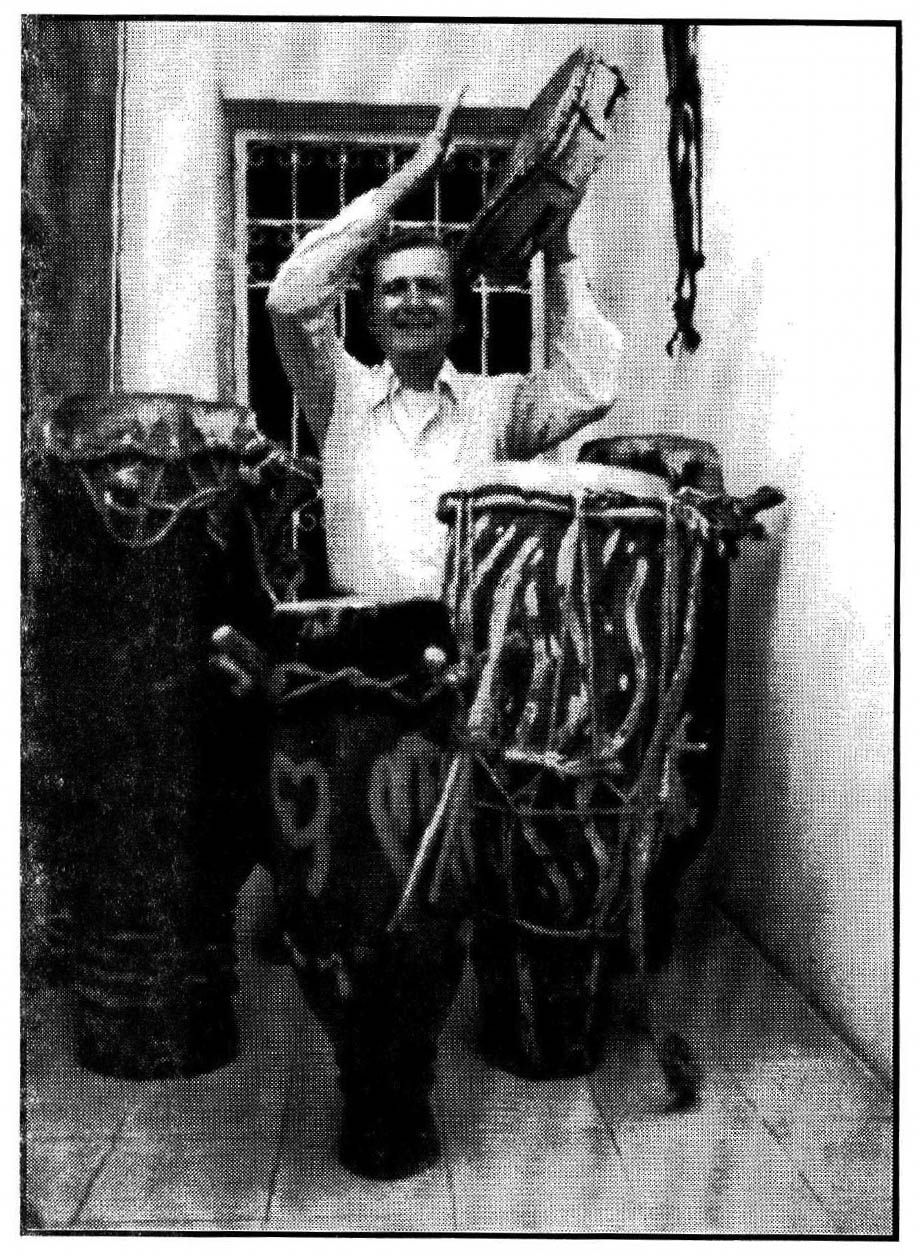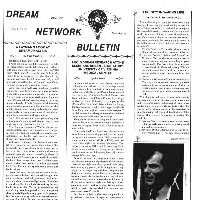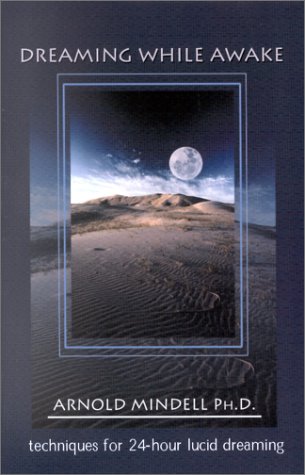Just as myths are waking dreams, so dreams speak the language of myth. Indeed, Jung stressed the indispensable importance of the psychotherapist's possession of a broad knowledge of comparative religion and mythology, if s/he is to do justice not only to the mythic dimension of dreaming, but also to the infinite complexity of soul.
Like myths worldwide, dreams are full of stories and dramatizations of conflict, wounding, healing, death, rebirth and transformation, what we could call 'Eternal Mind's eternal recreation' as it rehearses on an unconscious plane before appearing on the waking stage. By looking at our dreams in a mythological context, we can better appreciate soul's need to pathologize, and we can learn to navigate the Underworld through embracing symbolic death and rebirth in terms of their mythic resonances.
Personal vs 'Big' dreams
When dreams tap into the collective unconscious, which Australian Aborigines revere as 'the Dreaming', for instance, universal mythic themes (such as the Primal Serpent) inevitably erupt, since the archetypes which inform these deepest layers of the psyche usually take on mythological or religious forms. Most tribal cultures therefore distinguish between personal dreams - which have relevance only for the dreamer - and what they call 'Big Dreams', often the province of shamans, which tap into the omnipresent, universal archaic depths and present an urgent, deeply impacting and powerfully emotional message, or vision to the whole tribe - and (sometimes) to the entire World. Of course, the line of demarcation between Big and personal dreaming is blurred, as are all the psyche's fluid boundaries, such that most dreams contain a 'soul soup' mixture of both personal and archetypal material.
To best explore the wisdom, diagnostic and healing potential of dreams, we need to honor both their sense of imaginal play and the importance of intuitive insight as a mode of reflection on and path to understanding the psyche's drive toward wholeness. By exploring how our dreams and imaginations help us dialogue with the unconscious, these soul journeys invite us to blend original experience with mythic reflection on it, such that the personally unique is anchored in an archetypal, hence universally meaningful context. In this way, difficult, disturbing, intensely emotional, challenging, or wounding life situations, which are often 'represented' in our dreams, are sanctioned with meaning. For it is meaning which is able to make suffering bearable, while meaningless suffering is next to impossible to endure; indeed, it is a prime contributor to depression, anxiety and suicidal urges.
Dreamwork, imagination and conscious reflection work together to nurture the equilibrium and wholism of the psyche. By learning how to express or articulate our inner work in a variety of ways - through writing, reflection, artwork, dance, music, drama, or ritual - we activate the healing potential within us and acquire greater flexibility and broader scope in working with our own material, and when involved in one-to-one therapy, or creative group work.
Jungian Dreamwork
Throughout the process of (what Jung calls) individuation, which involves consciously incarnating and celebrating the unfolding Tao of our wholeness, we come to appreciate how dreams and creative imagination (as 'dreaming awake') contribute to the self-regulation, growth and natural balance of the psyche (the Greek term for 'soul'; hence 'psychotherapy' means 'serving the gods who inform soul').
Jungian psychotherapy is a shared soul journey in which each person, as an equal participant, stands to learn and be wounded and healed. Reflections on a particular dream or event are always imaged through a joint process of exploration, and I have found that in most therapeutic situations I have worked with, the myth , is acted out simultaneously and through synchronicity (as the mirroring of psyche and matter) on both the outer and inner planes. It is rarer, in my experience, to see the myth unfolding solely in either a dream, or in outer life.
Firstly, then, a sound understanding of the vast range of meaning of symbols in mythology, fairy-tales, symbols, alchemy and comparative religion helps us to amplify and provide an imaginal context for dreams and their archetypal material. An ideal place to start with dreamwork is therefore to read up as much as possible on mythology, alchemy and comparative religion. (Here Jung and Joseph Campbell are indispensable soul guides). Avoid stereotyping, or simplistic 'how to' books on dream interpretation, as well as rigid theories and methods. As Jung made clear, such quick and easy approaches are naive and useless, since each dream is unique and can be approached only through a painstaking examination of its personal context, regardless of whatever archetypal material might be present.
Dreamwork Exercises
Exploring dreams is hard work that deserves and rewards careful attention and in-depth study. For those feeling drawn to this inner work, perhaps you could begin by considering how dreams have contributed to your understanding of the individuation process, particularly in regard to the psyche's capacity for self-regulation, in particular its tendency to compensate, or counterbalance conscious one-sidedness. For instance, a person who is too theoretical, or impersonal often dreams that s/he is deeply involved in personal relationship issues that require a more feeling-based sense of values and emotional needs; or a person who thinks too highly of her/himself may dream that s/he is a nobody.
Using examples from your own dreams, or the recorded dreams of others, reflect on how dreams and creative imagination work have helped shed light on your life direction, values, ideas, abilities, blockages, imbalances, problem areas, or relationships. Next, try finding a quiet space where you can relax and journey inward without interruption. Center and empty yourself and invite a character from a recent dream, or a mythical figure to occupy your imagination. Dialogue with the character by watching, listening, and asking questions. Listen to the responses, which may come in words, images, feelings, transformations of form, gestures, offered gifts, touch, scent, or symbols. Relate the imagery, sequence of events, feelings, or symbols to significant issues in your own life and to any relevant themes, images, characters, or patterns of transformation found in myths or fairy tales.
Thirdly, through the use of either music, dance, drumming or ritual, or by focusing on stimulating imagery, allow your imagination to bring into focus a tranquil nature scene which you can safely enter. Find a special spot in the scene and use it as a starting point for an inner journey. Allow your imagination to guide you. Take note of what you see, feel, smell, taste, or hear along the way, and after you have completed the journey (by returning to your starting point), record or reenact your memories in the form of drawing, drama, ritual, song, poetry, sculpting, creating a personal symbol, or painting. Work meditatively, and allow your intuitions and feelings to shape your creativity. Later, in dialogue with a friend or therapist, reflect on the material and summarize, with reference to mythological material, any insights or intuitions at which you arrive.
Dream Incubation
Bearing in mind the need for a mythic context for wounding and healing, Jung's connection with the healing practices of the ancient Greeks becomes apparent. Patients went to the temple of the God of healing, Aesculapius, to receive their own healing dreams through 'dream incubation'. Lying on specially inclined couches (from the name for which comes our word 'clinic'), they would fall asleep, surrounded by sacred serpents which the priest-healers would release among them, and would hopefully receive in their dreams the needed remedy, sometimes in the form of oracular advice from the god. (Interestingly, even today we retain the memory of this rite through our medical symbol of the Caduceus of Hermes - the twin entwined serpents which image the male/ female kundalini energy and the ambivalent archetype of the Wounded Healer).
Following in this self-incubating tradition, Jungian therapists ideally aim to provide an atmosphere conducive to the activation of the psyche's self-creative urge, through allowing the unconscious to surface and speak freely through artwork, creative imagination, visual impressions, sandplay, shaping or molding, dance, drama, music - the possibilities are unlimited.
Shamanic Dream Healing
Working shamanically, that is, intervening in the healing process such that the patient is more passive, through rites of dream incubation I have at times emulated these practices of the ancient Greek healers. I have found this approach particularly helpful if a patient is extremely weak, exhausted, or otherwise unable to take an active part in the healing process.
The sleeper is placed on a slightly inclined place of rest, with the head to the North and uppermost to induce the flow of energy from crown, the place of dream reception and processing, to the feet at the South, the place of dream outflow (e.g. when some folk go astral traveling in dreams, they leave the body via the feet). I see the North, as do many Native American Indians, as the place of renewal of the Earth and the soul, the place of rest and cleansing, of Big Winds, which allow the sleep-released freedom of the flying spirit, and the locus of symbolic death as Winter dormancy, hence North focuses the right sort of energy for dream incubation and sleep-healing.
Again like the Greeks, I place serpent totems - often in the form of Australian Aboriginal and Huichol carved wooden snakes - around the sleeper, since they symbolize the healing gods and focus the power of the dream to both wound and heal. I also surround the person with quartz 'dream crystals', which are programmed to capture the dream, then replay it when the person awakens and communes with the crystal, often by placing it against the heart or third eye chakra.
Sometimes I gently drum and chant the person to sleep, while quietly calling upon several of my animal guides, usually Wolf, White Tiger, Unicorn and Turkey Vulture, to prowl in circular vigil about the room. I also ask (though cannot command) four of my shamanic deities, usually two from Overworld and two from Underworld, to stand guard in the four corners of the room. Sometimes, I enter the dreamer's dream through journeying, through which, in either animal or human form, I meet up with them and lead them on a journey, sometimes to recover a lost soul fragment. A few folk have recalled these meetings and journeys on waking.
Shamanic Crystal Dreamwork
Even though, as occurs in psychotherapy, it is still up to the patient to in some sense cooperatively receive the healing, shamanic help differs from therapy not only in being more interventional, but also in terms of the range of tools used for the job. As one example, I work closely, as do many tribal shamans, with the unique energies of stone and crystal, the characteristics of which are taught to me by Eternal Child deity Aaivan, who is concerned (as was Jung) with the psychic aspect of matter as the necessary complement to the material aspect of psyche.
Aquamarine, for instance, is a helpful stone for dreamwork. Since it embodies the ocean's energetic resonance (hence its color), it mediates our connectedness to the deep seas of the unconscious. I sometimes pre-scribe that a person try placing a piece of aquamarine under their pillow, or journey into its oceanic depths as a tunnel into the Undersea. As well, the color of our body's life-force is sky-blue, which is the color of Earth as seen from space, so aquamarine helps one travel into these outer regions.
I sometimes use aquamarine when assessing a person's surrounding life-force, which often looks like trillions of fine, hair-like blue arrows. If this field is thin in places, it indicates that physical strength needs boosting and I apply healing through the base chakra, using the aquamarine as an amplifier. If the life-force insists on leaving the body, the dying person can hold, if they wish, the aquamarine to help ease the transition to death, though this must be done with care so that the life-force is not held back too long.
Shamanism as Sacrificial At-one-ment
But regardless of which tools of the trade are used, and what degree of intervention is deemed necessary, shamanism does not only mean learning techniques. Shamanic healing means everything from the energy of touch, to one's sensitivity to the countless resonances of that same universal energy throughout mind and Cosmos, to the images, fire and feelings evoked when the shaman interacts and talks with others. More generally, working shamanically is, as much as anything, about cultivating, nourishing and sustaining a particular level of awareness in which many intertwining layers, or levels of reality are inscribed within one infinite Sacred Circle - which has no outside.
One way to access that reality is in our dreams, so may you explore and appreciate more fully the mythic resonances, scope and richness of your own dreams and imagination. May you come to cherish more deeply the challenges, treasures and healing potential that lie within you. And may these adventures into the labyrinths of soul be both rewarding, enlightening and nurturing to soul (including the World Soul) for all who choose to embark upon this fascinating and unending quest.
--
Text copyright 2000 Darknight Publications, from Re-Visioning Soul Retrieval: Creative Bridges Between Shamanism & Archetypal Psychology. Not to be reproduced whole or in part without the author's permission.
Dr Maureen Roberts is a psychotherapist, prize-winning writer, artist, musician, and initiated Celtic shaman who practices in Adelaide, South Australia. She is available for Jungian therapy, shamanic work, seminars, retreats and conferences.










